Life Outdoors After Backcountry Trauma

Written by Marcy Laufer - writer, nature-lover, and mindfulness student. Check out additional work created by Marcy here.
As I climbed up the hill I had just barreled down on a piece of cardboard, panic creeped into my chest. I stared at my boots gripping the snow, heard the sound of my snow-pants whooshing together, and felt the cold biting my cheeks and nose. For a minute, I was transported back to a few days prior when I had seen, heard, and felt those same things but had not been safe. I remember whispering to myself, "you are safe," and refocusing my attention on the laughter and happiness of my friend group. It was a confusing moment, to know I was safe, but to feel the same panic and fear of the previous day's events.
There's a lot to process following a traumatic event in the outdoors. In the wake of a life-threatening experience while snowshoeing in a remote part of Alaska, I have been in the process of learning and understanding how to be more responsible in the outdoors, both personally and for the people with whom I choose to recreate. In hindsight, there were a lot of things that could have been avoided, but sometimes you have to live and learn to know what you don't know.
Fortunately, our group was able to receive help from some extremely kind strangers, who we thanked profusely, and genuinely owe our lives. Following the incident, it took a while to process what had happened, reconcile with the power of mother nature, and the fragility of my life and the lives of my friends. In all honesty, it also took a while to stop judging myself for the mistakes that I made, and for not knowing the things I didn't know at the time. It's easy to think that certain things are just "intuitive," when in reality, if you don't know about the mechanisms of the human body, or are unfamiliar with the terrain or environment of a place you're in, what seems intuitive can easily become knowledge that should have been acquired beforehand.
Going through a life-threatening event in the backcountry made me realize how much I have to learn, how common backcountry incidents actually are, and how few resources there are for people who have experienced stressful situations in the backcountry. I recently listened to a podcast episode called Psychological First Aid, by The Sharp End, where a mental health nurse practitioner and veteran health provider in wilderness and humanitarian settings, Laura McGladrey, discusses psychological stress injuries.
According to McGladrey, psychological stress injuries form from exposure (or prolonged exposure) to stressful events such as watching a friend get injured, or hearing about others getting hurt or even dying on hikes or in outdoor spaces that we may plan to go to, or have been in the past. She takes the time to emphasize that oftentimes the person who gets injured isn't just the person who is physically damaged, but also those who witness the event. This resonated with me, as I had been witnessing someone in more danger than me. McGladrey also emphasizes that stress injuries can be both physical and mental, and are fluid, meaning that not all stress injuries develop into PTSD.
Surrounding yourself with people who can help support and guide you through moments when you don't want to go back outside and do the things you love, or feel anxiety and instability doing something you have extensive experience with, and who can help you re-establish safety following a traumatic backcountry event, is imperative to moving forward.
I recently went snowshoeing for the first time since I went to Alaska. While I walked towards the trailhead in the same boots and snow-pants that I had worn on that hike, I felt a little anxiety work its way under my skin. I wanted to back out, but instead told my friends how I was feeling. I conveyed the anxiety I felt about snowshoeing, and was met with support and understanding rather than the judgment that I feared. Even though the experience was unsettling, I was glad that I had people who encouraged me to come along rather than stay at home. Being able to snowshoe in a safe environment with people I trusted was imperative to re-learning how to enjoy the activity rather than associate it with fear. Although I felt slightly relieved by the time I unstrapped my boots from the snowshoes, I also felt proud of myself for taking that step forward.
I don't think that my experience in Alaska will be the last time I ever encounter a stressful backcountry event. I'm taking steps to educate myself and be safer, like enrolling in a Wilderness First Aid course and learning how to properly read maps and a compass, and recently invested in a satellite communication device for going into the backcountry where there's no service. I wish someone had told me that it's normal to need some time to fully process an event that challenges your idea of safety in the outdoors, and that talking to people who have experienced stressful situations in the backcountry can be extremely helpful.
I'd really like to see more resources for individuals who have experienced backcountry trauma, and hope to eventually be a provider of those resources at some point in the future. As of right now I've learned a few lessons, and will continue to learn and grow, and can always be more mindful that at the end of the day I am a visitor, and nature will always be a force to be reckoned with.


Leave a comment